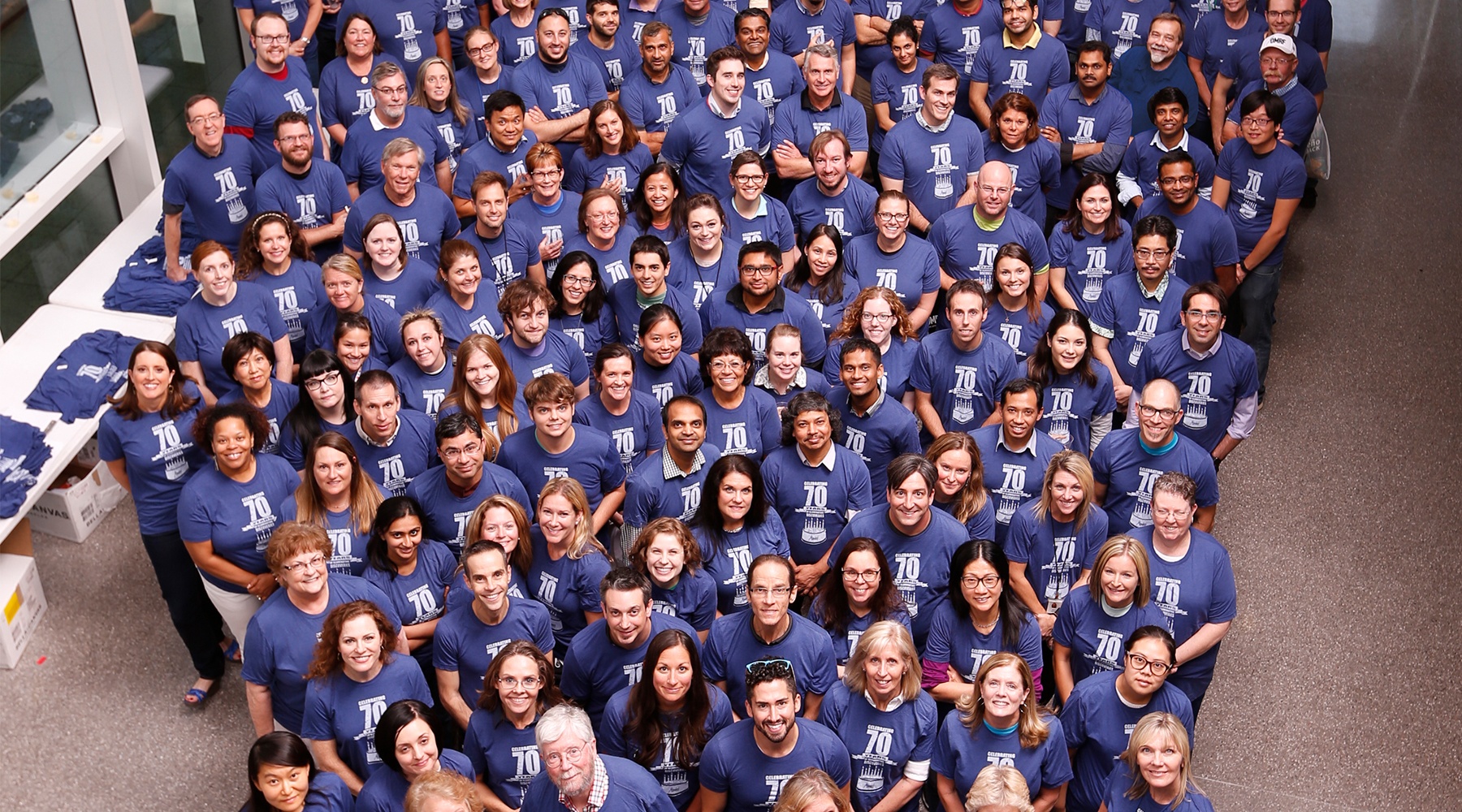Oklahoma’s medical research foundation celebrates 70 years of life-changing discoveries
In 1946, DNA was just a collection of letters. Genes were nicknames for those with the given name Eugene. And the world’s first biotech company wouldn’t be born for another three decades.
But in Oklahoma, a group of physicians and business leaders saw the future potential biomedical research held. In August, OMRF marked the 70th anniversary of the moment when Oklahoma’s Secretary of State granted the foundation’s charter.
“Oklahoma is a young state, so we’re often relatively late to the dance when it comes to historic developments,” says OMRF President Stephen Prescott. “But we were really on the cutting-edge when it came to creating OMRF.”
To fund construction of OMRF, Gov. Roy J. Turner led a drive that spanned all 77 of the state’s counties. The state’s physicians organized one fundraising campaign, and pharmacists, dentists and nurses followed suit with their own efforts. When Turner declared a statewide “Research Week,” organizers held 137 meetings in 42 cities and towns during a seven-day period.
All told, 7,000 Oklahomans donated a total of $2.25 million to build laboratories and a research hospital. And what began as a two-person operation in 1946 has grown into an internationally recognized research institute.
OMRF now employs more than 400 staff members who study cancer, heart disease, autoimmune disorders and diseases of aging. Their discoveries have yielded hundreds of patents and a pair of life-saving drugs now available in hospitals and clinics around the world.
OMRF’s work continues to produce new breakthroughs. For instance, in OMRF’s 70th birthday month alone, foundation scientists made important new insights about blood circulation, autoimmune disease and the roots of vision loss in multiple sclerosis. They also secured new federal grants to support their investigation into asthma and diabetes.
An experimental drug for the treatment of a deadly form of brain cancer developed by OMRF scientists is currently undergoing clinical trials in patients at the University of Oklahoma’s Stephenson Cancer Center. And in OMRF’s next-generation DNA sequencing facility, not only do researchers study the unique genetic “instruction booklet” scientists have discovered we carry within us; they can now also determine the precise genetic makeup of any person—in fewer than two days.
“I don’t think the founders and founding donors could have foreseen all the incredible science they’d make possible,” says Dr. Paul Kincade, who served as OMRF’s vice president of research from 2011 until 2016. “Still, I imagine they’d be pretty proud.”
To commemorate the milestone anniversary, foundation employees enjoyed cupcakes and champagne in the atrium of the research tower, the newest addition to the foundation’s Oklahoma City campus. The “low-key” birthday celebration, says Prescott, was in keeping with OMRF’s long-time mission.
“The technology and knowledge base have changed drastically since 1946, but OMRF’s goal has remained the same,” says Prescott. “We want to help Oklahomans and people everywhere live longer, healthier lives.”



